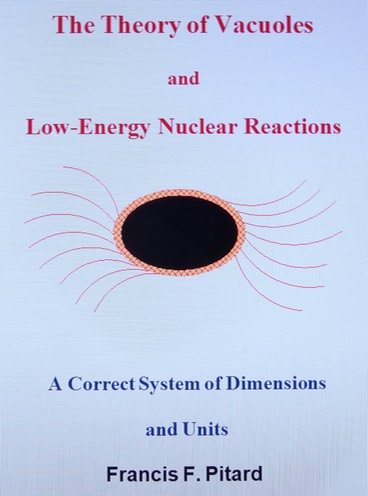
The Theory of Vacuoles was in its infancy until 2010. It was not received in a positive way by skeptical scientists, and with some justifications sometimes. But, the Alain Aspect experiment performed in 1982 changed everything when they demonstrated that photons travelling in opposite directions can still communicate at 10000 times the speed of light: obviously, we are missing something, and the Quantum Mechanics explanation is far from being satisfactory to many.
The Theory of Vacuoles offered an explanation in its claim that particles as we know do not exit. Only vacuoles in the Universal Medium give the illusion of particles; there is a huge difference. It requires a complete change of paradigm, and it is always a challenging proposal for many scientists.
In a nutshell, the Theory of Vacuoles says that there are no photons separated by long distance that can communicate at 10000 times the speed of light. Instead, the two so called photons are the same identity, the Universal Medium activated by waves and waves only, through Universal Entanglement. Basically, matter as we know it, is an illusion, and frankly, a beautiful one.
Charles Oliver Ingamells, a good friend of mine, who did most of the work on the Theory of Vacuoles quickly found out that our systems of units and dimensions, is not appropriate for Nuclear Physics, and suggested a far simpler system in line with the thoughts of Sir Arthur Stanley Eddington. The problem was not because a system like SI was better than an older system such as CGS; frankly any system can do. It was more that the existing system (SI) is unnecessarily complicated, based on facts that are acceptable to build a car, but unacceptable to visualize so-called particles. This undeniable fact has been hiding important properties about so-called particles that is interfering with effective scientific progress.
In the new suggested system, which is the object of Chapter 3, all values for the “fundamental” physical constants are absolute, except the time-thickness constant, t. We demonstrate in an unambiguous way that Time, Mass, Permeability, and Permittivity are relative concepts and do not need units of their own. We demonstrate in an unambiguous way that the electric charge is a surface area, and this alone is a big development for Physics. In the suggested new system, all physical constants can be expressed in terms of 1, 2, 3, π and t. Coincidence? Most certainly not!
The mass of the electron is an established physical constant, as is the mass of the proton. The ratio is about 1836. No one has been able to explain this ratio. Louis De Broglie, one of the brightest Physicist who ever lived, has explored the problem and concludes that “The problem of mass is very difficult, and one cannot say when or how it will be solved.” In Chapter 7 answer we provide a clear answer. The electron shell that surrounds the central vacuole or vacuoles is mostly our three-dimensional universe. Only that fraction of the electron that lies inside our universe affects our mass measuring device. The electron has the same mass as the proton, but is inside our universe only 1/1836 of the time. But, the positron is the mirror image of the electron: think about it! Would it be conceivable that the positron and proton, which carry exactly the same charge, therefore the same surface area, (coincidence?), are actually exactly the same thing? That would change a lot of things in Physics and our findings are undeniable. Perhaps, this fascinating coincidence is the key to better understand or predict Low Energy Nuclear Reactions.
Chapters 8 and 9 may appear more controversial at first glance, but the end product of this work is exposed in Chapter 10, and especially Table 10.0 on which we perform a lot of work to review all natural isotopes found in nature, and classify them according to their respective stability. Using this table, we can find a few interesting observations that can be related to other observations made by many people around the world, such as:
· Possible Low Energy Nuclear Reactions taking place between hydrogen and some nickel isotopes
· Possible transmutations from Potassium to Calcium
· Explaining the awesome power of forest mycelium
· Speculating on a possible alliance between Carbon and Silicon networks
· The proportion of mercury isotopes used in CFL bulbs does not match the normal proportion of mercury isotopes found in nature.
· Lithium batteries catching on fire for no apparent reason
The list can go on. The question is: why is it that all these suspicious observations match our classification about the natural stability of isotopes in a remarkable way? Coincidence? Most certainly not! Our analysis is far from perfect, however, all along, we must have done something right worth far more work.
Finally, we jump from our limited 3-dimensional universe to something far bigger, and perhaps, revive the old Sir Fred Hoyle works in astronomy that make far more sense when using the Theory of Vacuoles.
A word of wisdom: This book should not be taken as a criticism of the Establishment. It is most certainly not the case and we immensely respect the wonderful works of many scientists around the world. We are only pointing at some details that may have escaped observation for too long. We are trying to help in a humble way.
 The Theory of Sampling and Sampling Practice, Third Edition is a step-by-step guide for anyone challenged by the many subtleties of sampling particulate materials. It is the only comprehensive document merging the famous works of P. Gy, I. Visman, and C.O. Ingamells intoa single theory in a logical way. As a result, it is the most advanced book on sampling that can be used by all sampling practitioners around the world.
The Theory of Sampling and Sampling Practice, Third Edition is a step-by-step guide for anyone challenged by the many subtleties of sampling particulate materials. It is the only comprehensive document merging the famous works of P. Gy, I. Visman, and C.O. Ingamells intoa single theory in a logical way. As a result, it is the most advanced book on sampling that can be used by all sampling practitioners around the world.
Many complex features are covered by an entire chapter or several chapters, such Sampling of precious metals
• Sampling of trace constituents in high purity materials
• Sampling the environment
• Sampling for the moisture determination
• Sampling for particle size distribution
• The concept of equi-probabilistic sampling
• Correct design of sampling systems
• Sampling for metallurgical accounting and process control
• Taking advantage of existing chronological data
• Proportional sampling and bed blending
The third edition is a valuable guide for mineral processing engineers, metallurgists, geologists, miners, chemists, environmental scientists and academics. The book is set in a pragmatic way ideal for self-teaching critically important subjects that have been overlooked for too long by universities and colleges. The new edition covers recent knowledge, acquired during the past 20 years, accumulated by the many World Conferences on Sampling and Blending; as a result many notations are new. New chapters have been added to emphasize chronostatistics. Visman and Ingamells’ works, and the importance of sampling for trace constituents.
Dr. Pitard is a well-known authority on sampling theory and practice. He has a Doctorate of Technologies from the University of Aalborg. He is the recipient of the famous Pierre Gy’s Gold Medal for excellence in promoting and his teaching of the Theory of Sampling all around the world.
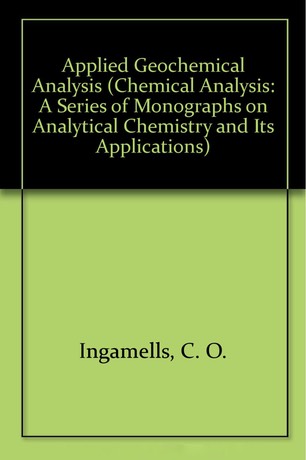
This treatise on practical inorganic analytical chemistry includes not only classical, but also newly developed determinative techniques: XRF,ICP,AA, and others. The importance of Sampling Theory, especially as applied to the assay or analysis of exploration samples, is emphasized. Also discusses the use and misuse of reference samples or ``standards''. An important section on ``The Art of Chemical Analysis'' deals with manipulative ``bench-top'' problems often ignored in these days of automated instruments. A number of mineral analyses are presented, with a brief description of the procedures by which they were generated, and the difficulties encountered in actual practice.
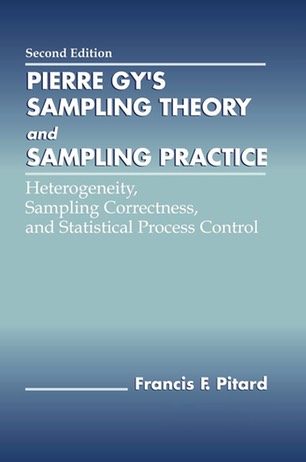
Pierre Gy's Sampling Theory and Sampling Practice, Second Edition is a concise, step-by-step guide for process variability management and methods. Updated and expanded, this new edition provides a comprehensive study of heterogeneity, covering the basic principles of sampling theory and its various applications. It presents many practical examples to allow readers to select appropriate sampling protocols and assess the validity of sampling protocols from others. The variability of dynamic process streams using variography is discussed to help bridge sampling theory with statistical process control. Many descriptions of good sampling devices, as well as descriptions of poor ones, are featured to educate readers on what to look for when purchasing sampling systems.
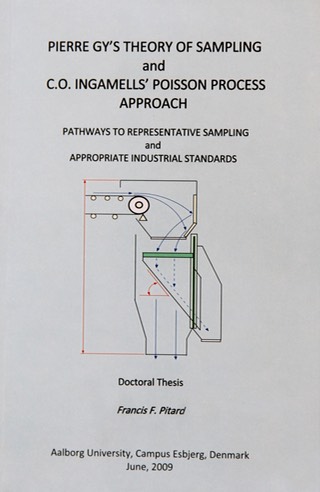
This textbook encompasses a broad historical and methodological scope concerning the Theory of Sampling (TOS). Part 1 (Theory) opens with the critical distinction between sampling error and sampling uncertainty. It shows the many ways to estimate the variance of the Fundamental Sampling Error. It makes an unambiguous introduction to the concept and critical importance of sampling correctness and representative sampling. It presents suggestions for new notations regarding process sampling. It shows the necessity of being knowledgeable of Poisson processes that always have devastating consequences for the uninitiated sampling practitioner. It highlights the logic of Pierre Gy’s preventative paradigm, the unbiased sampling process. It outlines C.O. Ingamells’ historical work which is shown to constitute a vital complement to address issues involved in developing practical and preventive sampling protocols for all of science and industry. Part 2 (Practice) highlights selected areas in which TOS is essential e.g. the economic weakness of common blasthole sampling practices – and a strategy for the special case of sampling for trace constituents. The concept of Data Quality Objectives (DQO) is introduced. It offers a link between Geostatistics and the TOS by investigating in depth the subtle nature of the In Situ Nugget Effect. It shows the benefits of Chronostatistics to take advantage of existing process control data. It also shows that TOS must be an integrated part of Total Quality Management (TQM), of sampling due diligence auditing processes, indeed of any feasibility study, and of the creation of logical pathways to appropriate industrial sampling standards. The book is intended to be a facilitator for a large body of valuable academic work to develop into an acceptable product for the prospecting and mining industry in desperate need of TOS that can be used in mineral economics. Too often, industry practitioners regard TOS as a tool that has no link with the real world. Such a position is shown to be unjustified in the light of often crucial economic losses due to TOS disregard. The best way to improve this situation is to make the TOS a mandatory course at universities. It is of utmost importance to integrate the knowledge outlined in this thesis as part of the economic fundamentals used every day by scientists, geologists, geostatisticians, engineers, metallurgists, chemists, and many others. The Theory of Sampling constitutes the only framework upon which to base any sampling standard, whether for scientific, trading or legal purposes. Please contact Dr. Francis F. Pitard for more information.
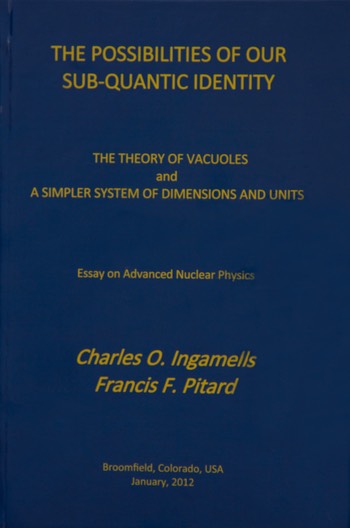
This book shows beyond any possible doubt that our current system of dimensions and units, metric or not, is not an appropriate tool for advanced Nuclear Physics and Astronomy; it is unnecessarily complex with foundations that are more emotional than scientific. The system is acceptable for our day-to-day lives, when we cook for the family or build a car, totally unacceptable when we explore what the Universe is. A much better and simpler system is suggested. Let’s prove beyond any possible doubt that time, mass, permeability and permittivity do not need units of their own. In the suggested new system, all values for the “fundamental” physical constants are absolute, with the exception of the time-thickness constant. This alone eliminates unnecessary ambiguity and greatly simplifies our research for the ultimate truth about our place in this Universe. Then, and only then we can start our journey to the elusive heart of matter. It is indeed my view that the following work, if taken in a constructive way, can actually be a trampoline for today’s nuclear physics, quantum mechanics, string theory and astronomy in order to reach astonishing new possibilities, without, and I insist without, challenging the acquired knowledge from so many talented scientists accumulated over the past 200 years: without them this essay could absolutely not exist. The only thing it takes is a necessary shift in paradigms, from one paradigm for which we have been carefully wired for over 6000 years (i.e., looking at ourselves in a 3-dimensional universe) to another paradigm for which we are not prepared at all (i.e., looking at ourselves as an intimate part of the n-dimensional Universe); this may not seem new to many, but there are deep subtleties in the following work that makes it different and unique. As the reader will slowly progress through the text the argument should become self-explanatory, until we finally reach dramatic conclusions. In other words, nuclear physics, quantum mechanics, string theory and astronomy are a huge part of today’s fundamental knowledge in physics. Only a very deep reason, at the deepest roots of how we perceive the sub-quantic medium, could explain why we may have to take a deep breath, and completely rethink some of the assumptions that were used to wire our mind in the ways we think today. It is important to be humble about it and only look at the new possibilities. Along the way we will find out that we may have another serious problem with our existing systems of fundamental dimensions and units, metric or not: suggestions will be given as they were a natural by-product of our ways of thinking in this essay; this by itself should make the following work a cornerstone of a newway of thinking: a simpler and deeper way. Please contact Dr. Francis F. Pitard for more information.
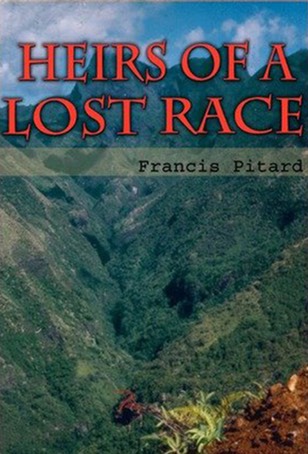
For Polynesians, Tici, Teke, or Tiki is the sacred origin of all knowledge. In the Andes, Kon Tici means "Son of the Sun." What a remarkable coincidence! Kon Tici had the courage to live with a superb, unshakable ethic of peace. Along his breathtaking journey, he meets a young Polynesian woman, Hina of the Valley. Born with a noble heart, motivated by her tremendous respect for nature, self-reliant, and driven by constant love for her people, she matures quickly, and becomes a priestess second to none. Heirs of a Lost Race is the love story of Kon Tici and Hina of the Valley that should inspire, give a model of ethics, and provide hope and optimism. They are from different worlds, races, cultures and beliefs, leading to a breathtaking encounter. Within a microcosm of the South Pacific, forgotten values with universal reach are explored. Around the characters there is a constant powerful, spiritual and cosmic presence. The characters feel that presence, which adds a mysterious touch to their story and behavior.
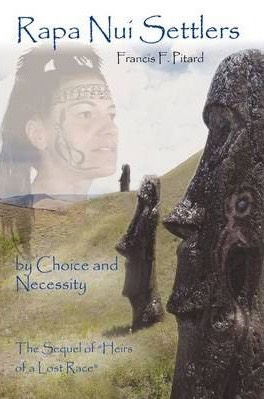
I know some people will read this book and think of it as a fantasy that took place more than 1600 years ago. So be it! As a good friend of ours, Dr. Janet J. Seahorn put it so well after reading my first novel: “Sometimes you pick up a book thinking it will just be an average reading experience; one that gives you something to do on a normal day where you have a few hours to sit and relax. Heirs of a Lost Race is not such a book. It is much more and demands that the reader pay attention to the greater message. Pitard requires the reader to think about the characters, what is happening and why, and contrasts that information with his/her world. It takes several chapters before the pieces begin to fit into the story and is worth the wait.” I kept the same spirit for Rapa Nui Settlers. This book pays homage to the real Rapanuis, the original Rapanuis, a peaceful group of talented, intelligent, and caring people. Contemporaneous theories characterizing the Rapanuis as a self-destructive society that created the environmental disaster, starvation, cannibalism, and warfare resulting in its downfall is unadulterated slander! In today’s society, we often scrape the bottom of the barrel to rationalize what we do today around the world. Such is the case for those who cast aspersions on the Rapanuis. Mongers of inaccurate, arrogant, and contrived pseudo-histories have done a criminal disservice to a proud people and to the rest of us who honor them for their magnificent achievements. The following story is a product of the author’s imagination. However, I made a strong effort to emphasize the few things they may have done right in the early days, and perhaps we could learn something ourselves on how to cure that which makes us who we really are today.

These were the times and places where humans descended to a level lower than animals. Ravensbrck was one of those times and places where human dignity became an unimaginable luxury. This is a true story of prisoner 44667 and the routine horror that systematically denigrated and stripped 132,000 women of their humanity. It is the story of true love. The details are historically accurate. None of the characters are fictional. Aline Virmoux and her husband were active members of the French Resistance. After three years of successful activities, they were caught in 1944 by the Gestapo. He was deported to Dachau. She was deported to the womens concentration camp of Ravensbrck. Aline last few days in Nazi Germany were nothing short of a breathtaking and unforgettable case of survival and bravery.
https://www.amazon.com/Books-Francis-F-Pitard/s?i=stripbooks&rh=p_27%3AFrancis+F.+Pitard